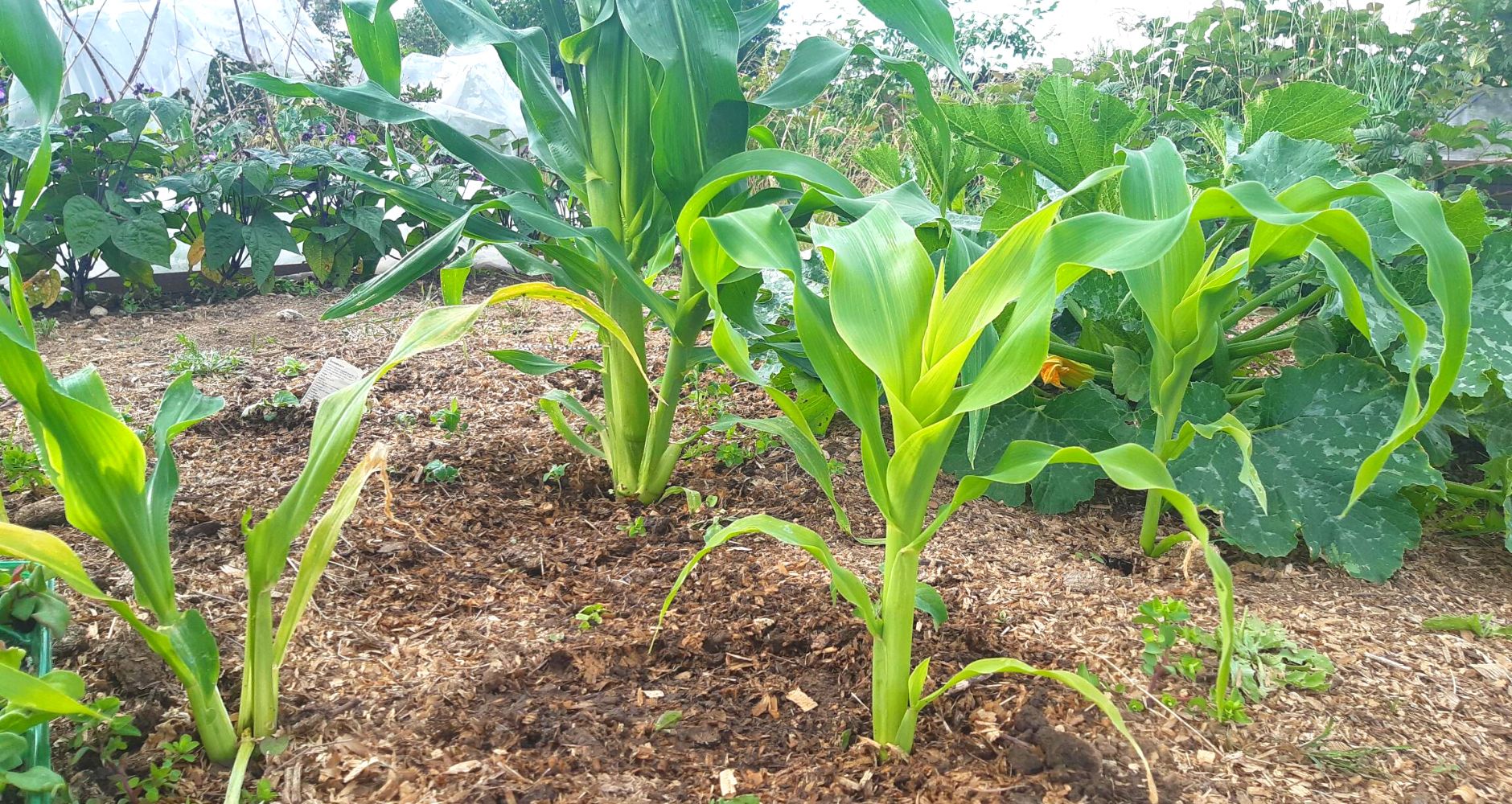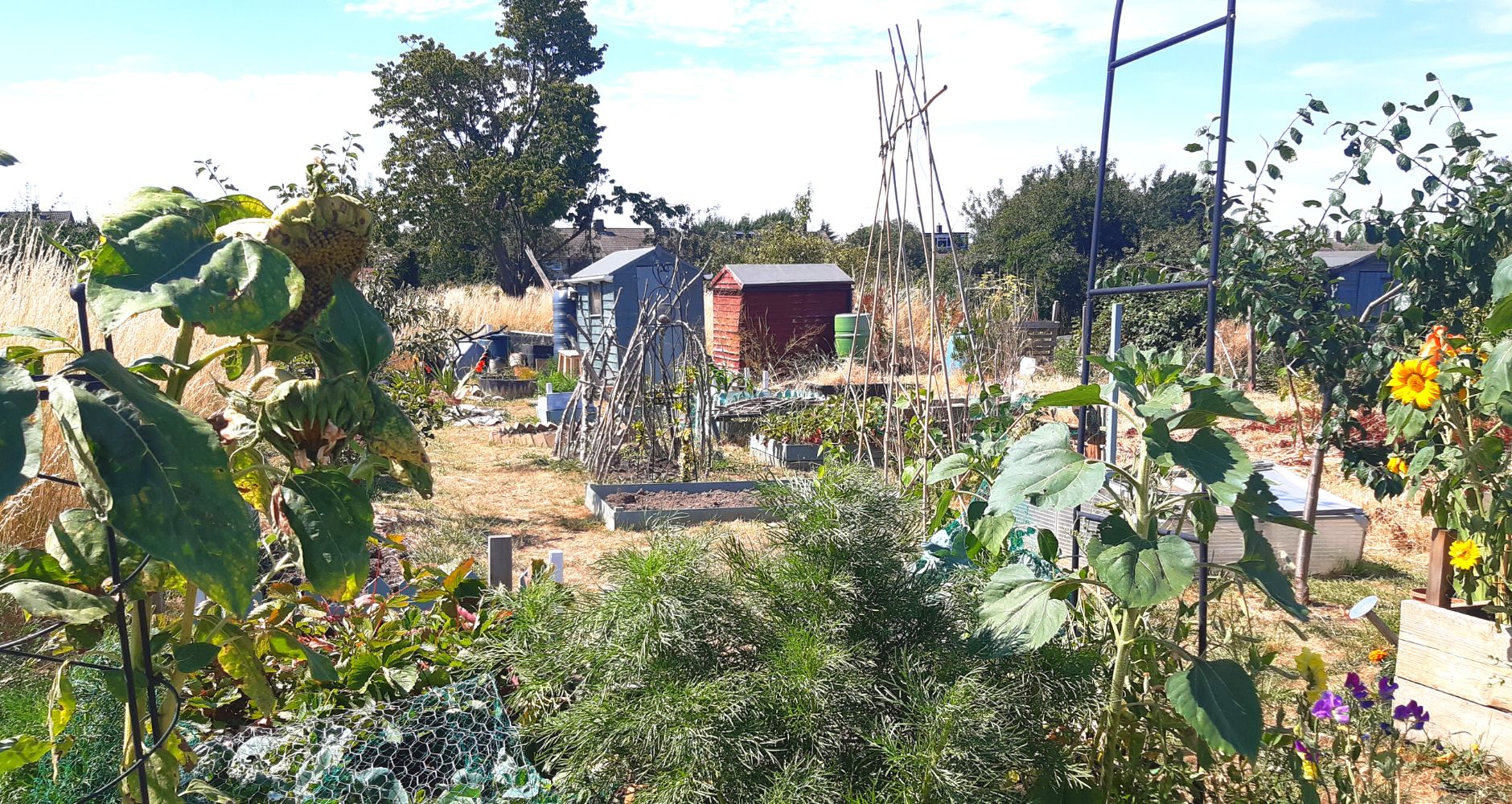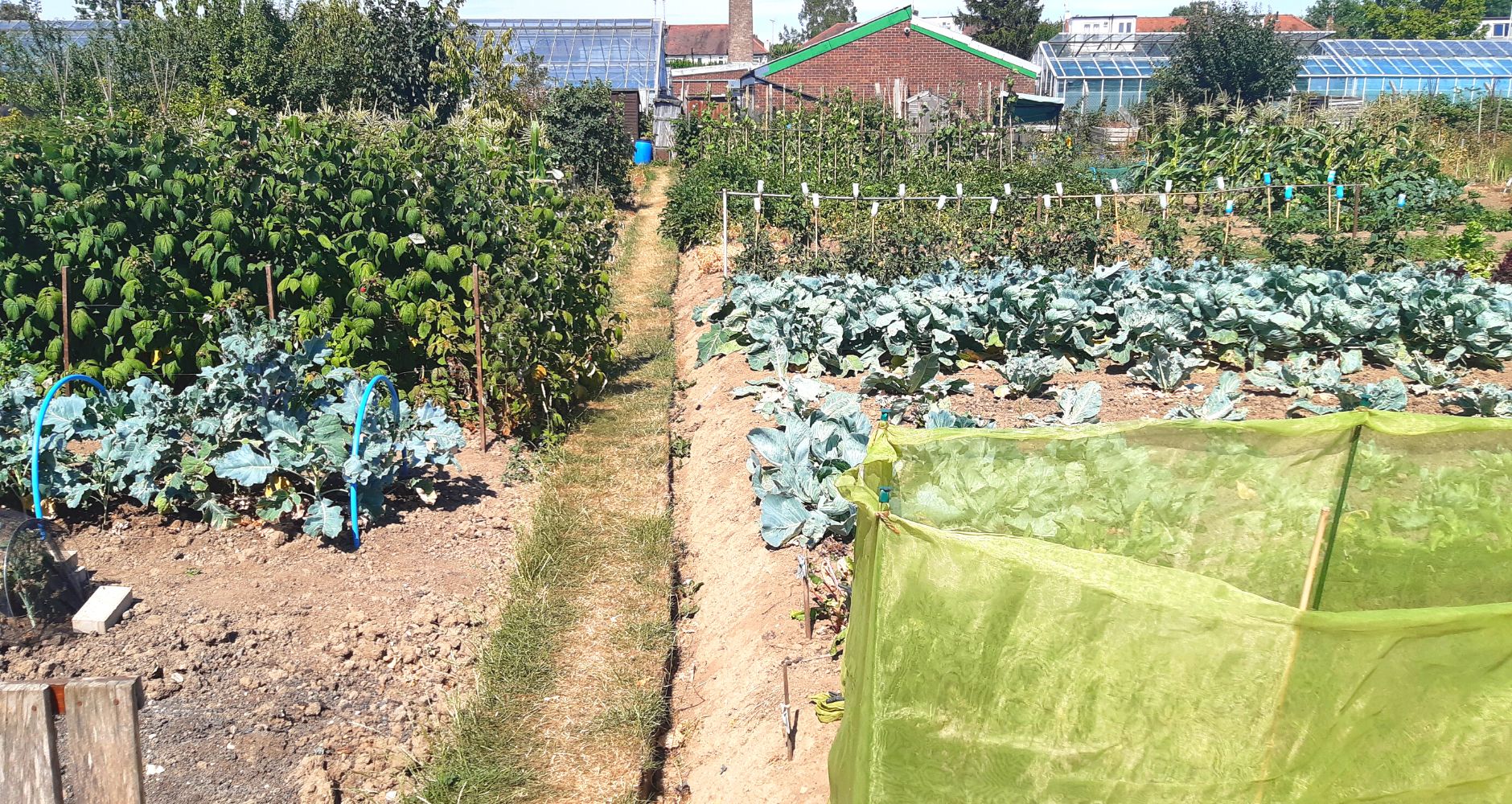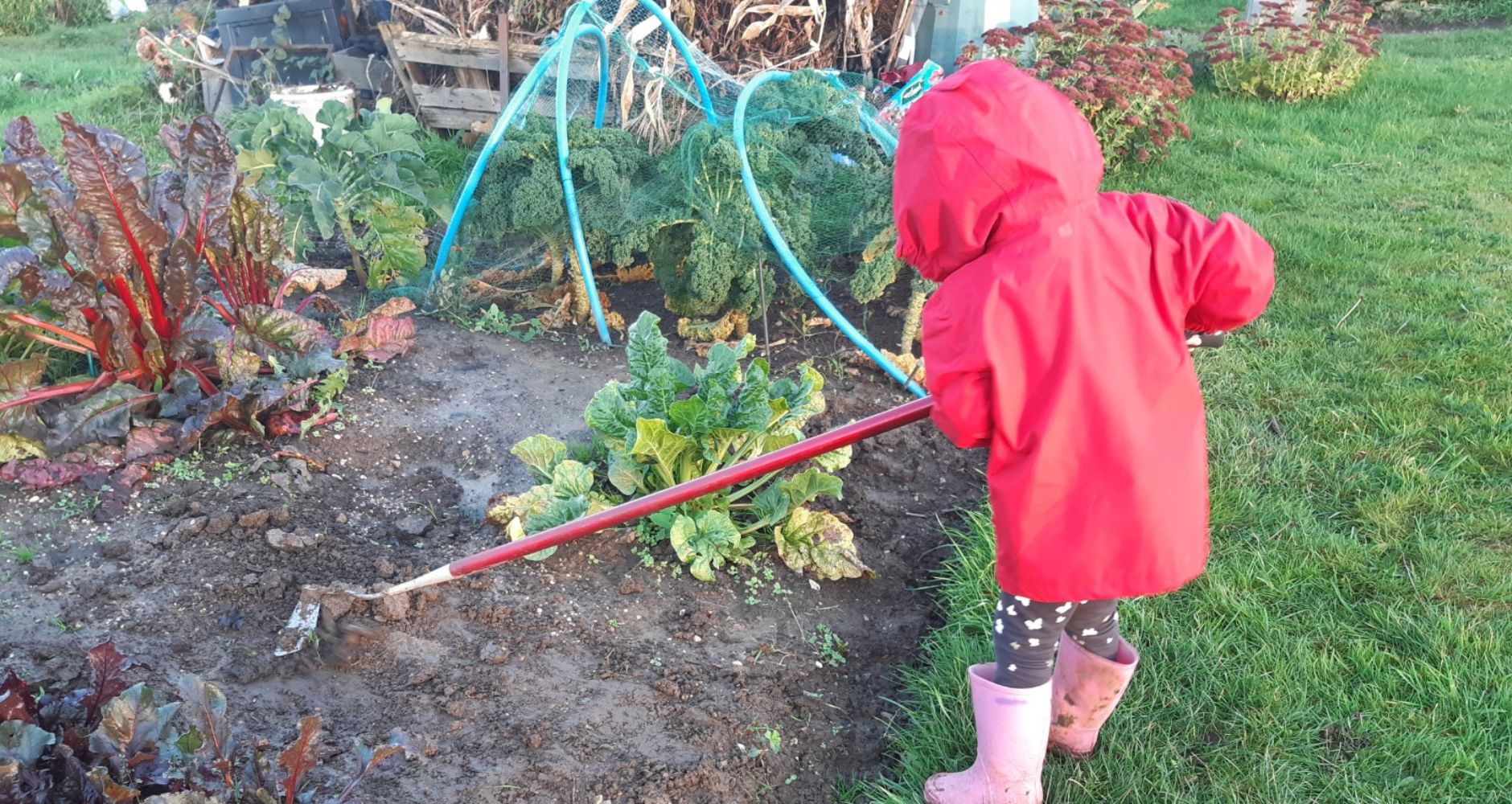Plotting for the Future
What is an allotment?
The basic definition of an allotment is “a plot of land rented by an individual for growing vegetables or flowers”. This land is often, but not always, provided by the local council. To many, an allotment is just that; a plot of land used to grow things. However, for users, it can be so much more.
My own allotment experiences started nearly 20 years ago. Fed up with living in varied rented accommodation, with no outside space to garden or grow food, I took on a plot from my local council. Here are a few reflections from my journey so far.
Your plot, your choice
When you grow your own, you get to choose what you’ll eat. You can grow varieties for flavour rather than to withstand transport and long storage. Sweetcorn cooked straight after picking is nothing like the corn on the cob you’d buy in the shops as the sugars start turning to starch as soon as it’s picked. Allotments provide fresh seasonal fruit and vegetables for a healthy diet and increased food security as prices rise.
You can also grow things you’ll rarely (never?) see in shops, such as honeyberries (an edible honeysuckle), pink blueberries and tayberries.
I also choose to grow high value but low maintenance crops, such as gooseberries and blackcurrants, which can freeze and provide fruity puddings all year round. Other than pruning in winter and a month of intensive picking in the summer, they more or less manage themselves.
Experimenting is all part of the fun, so each year I try something new. This could be an unusual vegetable or salad crop, or a different method of growing a food. It’s not always a success, but there are no real failures in gardening, just learning experiences. I now know that cabbages refuse to grow on my plot, baby turnips are delicious in salads (and a favourite of the resident pigeons), and that mice will break your heart when they dig up every pea seed in a newly planted row!

A haven for wildlife
Allotments provide a valuable habitat for wildlife in urban spaces, and often link up with other green areas. My site is located between a housing estate and an industrial/retail park, yet I’ve seen toads, badgers, foxes, bees, butterflies, woodpeckers, mice, innumerable types of insects, birds, dragonflies and more.
Pollen-rich flowers and shrubs are planted to encourage beneficial pollinators to the plot. Last year’s main project was digging a pond to welcome frogs, who in turn will reduce the slug population.
Time spent outside gardening, connecting to nature, also has positive effects on physical, mental, and social wellbeing.

A sharing community
An allotment site is a community, and each site will have its own characteristics. But they’re sharing communities, be it advice (that you may wish to ignore!), tools, seeds, plants or produce.
Names can be hard to remember on larger sites, so my family tend to use nicknames to identify people and plots. The Gatekeeper (who kindly disinfected the gate during Covid lockdowns), Fanta Man (guess his favourite 11am drink), The Boys (a collective of half a dozen young lads who socialise on their plots), Flower Lady (for obvious reasons), and Lord and Lady Muck (they once escorted a tractor-load of cow manure onto the site in their Sunday best), to name but a few.

Reuse on the plot
If you’ve ever visited an allotment site, then you’ll know that allotmenteers are ingenious when it comes to reuse and repurposing.
Nothing ever goes to waste on allotment sites. Plant waste is composted in bins made from pallets, brassica cages constructed from old wood, metal and wire, fruit bushes protected by old net curtains. Old barrels and guttering are used for waterbutts, bird scarers made from CDs, and cold frames from old windows.
Even vacant plots are raked over for whatever’s useful, be it bricks, wood, piping or old netting.
Cardboard is gathered from skips and home deliveries, to lay down as a weed suppressant, preserve moisture and add carbon to the soil. Horse manure is delivered by a local stable, and wood chips from a tree surgeon. All help to improve the structure of the heavy clay soil on which we’re based.
Hazel is coppiced to provide beanpoles, pea sticks and other structures. Comfrey and nettles are grown for wildlife and then turned into a potent liquid plant feed.
Reuse even played a part in the beginnings of the site I’m on. Old railings from a council park were used in the 1920's to enclose the allotments from the road.
Get the family involved
My eldest daughters’ first outing was to the allotment to pull rhubarb. At a week old I’m not sure she remembers, but I do!
Since then, my kids have tried to dig to Australia, practised handstands, fallen into muckheaps, built an insect hotel, enjoyed wheelbarrow rides, delved into bug hunts, climbed trees, metal detected for “lost” coins (my cunning plan to encourage them to dig), and they now have their own areas to grow what they want.
Any help they give is a bonus, it’s just a delight to see them exploring the natural world.

A living larder
One of the best things about a visit to the allotment is never going home hungry. There’s always something to nibble on, be it fruit or salad in summer or kale in winter. Peas are something that rarely make it home as they’re always eaten direct from the pod!
And finally...
If you want an allotment, check with your local council. There may be a waiting list so be prepared to wait. Use the time to plan. Then, make it yours and do with it what you will. It can be hard work, but you mostly get out what you put into it.
Over the years my relationship with the plot has changed as life has moved on. Some years it's just ticked over, others have been a hive of activity, dependent upon the amount of time I could devote to it.
So, what is an allotment? A plot of land for growing vegetables or flowers? Yes, but it’s also a refuge, a canvas, a playground, a laboratory, a workshop, a community, a gym, a nature reserve, an escape (especially true during Covid lockdowns), a church, a larder, a place of reflection, a little piece of heaven you can call your own.


